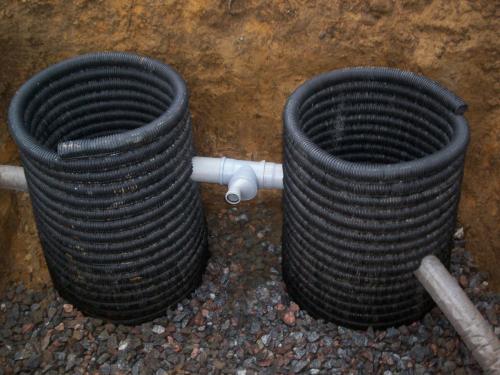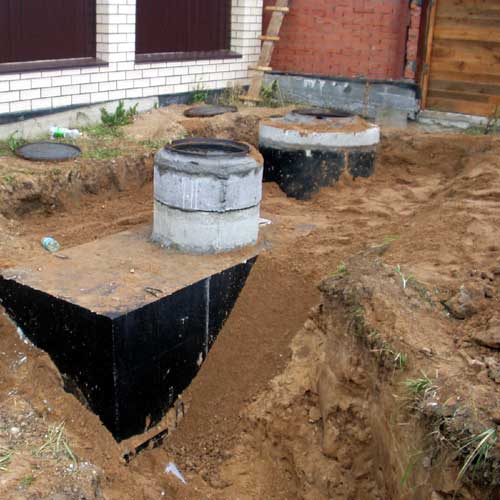Comfortable accommodation in the cottage, in the country or private house is impossible without a sewer system. Pretty long period of time, cleaning wastewater in homes was based on homemade toilets or cesspools, where there was practically no processing of wastewater.
Today, the sewage is an integral part of any housing. Its main purpose is to withdraw the wastewater, numerous household waste and livelihood products outside the residential space, that is, the creation of the most optimal norms for normal life.
Sewer well how to make
Modern sewage system must comply with the following standards:
- the use of special materials for the construction of networks;
- a certain calculation of water spending norms;
- The use of specialized techniques for the construction of sewage networks inside the building;
- Standardized distance between sewer wells and residential complexes, sources of drinking water, borders of sections and water bodies.
At the same time, the inexpensive sewer system can be made of a wide variety of building materials. For example, you can order a tank of a certain size and shape, however, in residential buildings, a sewer well made of concrete rings remains one of the most efficient and durable methods of installation.
Selection of the sewer system depending on the wastewater treatment technology:
- biological cleaning;
- chemical cleaning;
- Mechanical cleaning.
Creating a scheme of a sewer well and its project is expedient to combine with construction planning - it will be fine cheaper.
Sewer risers should be located in special boxes and pretty close to the equipment that creates a medium. Place sewer pipes are not recommended in wall niches, since the supporting structures can weaken, and there is also a chance of freezing.
Types of work, which involves an external sewage system:
- direct installation of the sewer well;
- Installation of the flow supply system.
Main types of sewer wells:
- septic tanks with a variety of filtration and purification systems;
- In force on the principle of cesspools.
Installation of wells are made by technology that corresponds to its specific form. It is easier to mount a cesspool well, but when choosing this design, it is necessary to take into account the intensity of its use. With the right structure, which will comply with all principles, such systems can functionably function, subject to regular maintenance of specialized machines.
In those houses, where permanent accommodation is expected, the best option will be the installation of septic. Their installation will be released a bit more expensive, but maintenance and operation will be less complex.
The wastewall system is an outdoor sewage that is laid taking into account individual preferences, landscape features and climatic conditions.
All elements of the modern sewage system are made of polychlorvinyl and polyethylene. Their advantages over metal products are as follows:
- simple installation and possibility of connecting with elements of other building materials;
- Not a very big mass;
- reduced hydraulic resistance;
- the inner smooth surface of the pipe;
- resistance to the effects of wandering currents and wastewater;
- Resistance to the effects of microbiological organisms and chemical compounds;
- Not subject to corrosion.
Disadvantages:
- thermal expansion with increasing temperature;
- Fragility at low temperature.
Types of keys
Depending on the design features and destination, the following types of wells are distinguished:
- Filtering and accumulative
Created for collecting, settling and further filtering sewage drains into the soil.
2. Watching
Provide access to the system with a long pipeline. According to the norms, such a well should be no more than 12 m from the foundation of the structure, and the distance between them on one pipeline should not be above 15 m.
3. Discount
Created there, where because of some features of the relief, there is no possibility to pave a pipeline with a special bias.
4. Rotary
Such wells are similar to observation, but they are not mounted on straight long sections, and where the pipeline turns.
Sewer wells do it yourself
Installation of sewer wells:
1. Already at the planning stage, it is necessary to determine the exact location where the well will be located. The best option to make it on the site, which is slightly lower than the level of the house. If the wells are somewhat, then be sure to take care of the right distance between them.
2. The following is designed for the purchase of building materials and equipment.
3. After the first items are fulfilled, you can proceed to the arrangement of the pit, which should correspond to the appointment of the well. For his digging it is recommended to use
Excavator, otherwise, work can delay.
4. After the arrangement of the pit should begin to raise the basis.
If you have a cumulative kind of well, then you need to hold certain rules:
- It is necessary to float the bottom of the gravel (layer from 10-15 cm);
- Next, pour it with a cement solution.
If you are equipping a filtration well, then:
- It is necessary to concrete the pit solely around the perimeter, the center is left free to provide drainage;
- As a drainage, we take pebbles or gravel;
- I fill it with a layer of 50-100 cm on the bottom of the well.
5. When the base can be prepared for the construction of the base chamber housing. For its manufacture, you can apply reinforced concrete rings, broken stone or brick. The finished body should be surely sealed with bitumen from the inside or to melt the joints of the cement with the junction between the reinforced concrete rings.
6. Outside, it is possible to create an additional waterproofing of the sewage well, coating with a bitumen or thick layer of clay.
7. Further, a drain pipe is mounted in the finished chamber, thanks to which the drains will be held in the well.
8. The accumulative and filtration wells combine overflow pipe to drain the clarified water.
9. Under the overflowing tube in the filtration well, we put a water-cutting board, which will avoid the blur of the drainage.
10. From above, the well is overlapped with a plate of concrete with ventilation holes (the ventilation box and ventilation pipe are mounted) and a hole under the sewer system.
Despite the fact that the wells have a different purpose, their installation is made approximately by one scheme.
Sewer Well Video Device:



























